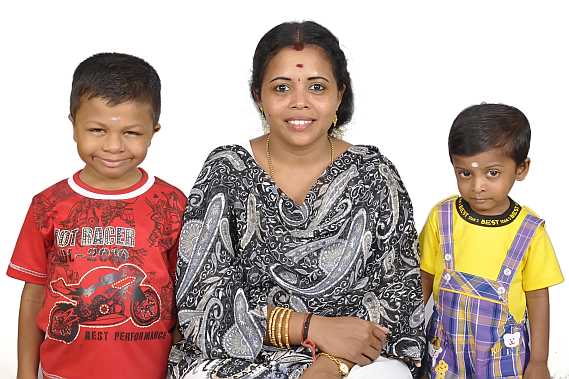
While 2000 children across the world have been diagnosed with cystinosis, only 18 have been identified in India. The first line of treatment is to put the child on Cystagon, a drug manufactured in Europe. This helps to manage the disease for a while, but invariably renal complications set in and dialysis becomes the next course of action, leading eventually to renal (kidney) transplantation.
What is Cystinosis?
Cystinosis is a rare genetic, metabolic disorder caused by the accumulation of amino acid cystine in the lysosome of body cells which results in cell death. This accumulation can take place in any organ of the human body, but the kidney and the eyes are the generally the most affected. Build-up of amino acid cystine in the kidneys causes tubular defects with loss of many nutrients in the urine, and this leads to growth retardation and eventually, kidney damage. When amino acid cystine is deposited in the eyes, it causes photo-sensitivity and results in blindness. Most symptoms start to develop between 6 and 12 months of age and affect the liver, spleen, lymph nodes, thyroid, intestines, muscle, brain, bone marrow and other parts of the body
Cystinosis manifests as:
- Fanconi syndrome
- Dehydration and excessive thirst / urination
- Renal (kidney) impairment
- Sensitivity to light
- Muscle wasting
- Failure to thrive / slowed growth
- Stomach / gastrointestinal problems
- Rickets
When Hariharan came to MIOT
Three years ago, 12-year old Hariharan was brought to MIOT International. He suffered from poor vision, and upon testing, our ophthalmologist found crystal formations in his eyes. The diagnosis was Cystinosis which is a genetic disorder caused by accumulation of amino acid cystine in the body cells.
After Hariharan was diagnosed in 2012, he was put on Cystagon but as his health deteriorated, he was brought back to MIOT International in June 2014. He weighed only 12 kg and was in a very emaciated condition.
Hariharan was started on hemodialysis on a tri-weekly basis, which is very challenging in such a weak and small patient. With a special dialyzer and tubing, the young boy slowly improved and gained 3 kg in weight. However, kidney transplant was the only real option.
MIOT swung into action with the help of donations and aid from the Cystinosis Foundation (India). Hariharan’s father, whose blood matched his son’s, donated one kidney and the boy underwent kidney transplant on 26 May this year. It was a very difficult operation – an adult-sized kidney had to be placed in a small child. Fortunately, the expertise of the surgical team, led by Dr. Paari Vijayaraghavan and Dr. Shanmuga Sundaram, saved the day and the transplantation was successfully carried out with the paediatric anaesthetic team also playing a key role.
MIOT International is happy to report that young Hariharan has recovered well with normal kidney functions today. He comes for follow-up treatment as outpatient. It is important to mention here that this is the second time in India that a child with cystinosis has undergone successful kidney transplantation. Both surgeries were performed at MIOT International.
In 2010, it was at MIOT International that such a kidney transplant was performed on a child with cystinosis for the first time in India. The young patient, Master Sanjay, now 12 years old, is growing well and following up with normal kidney functions. As a result of his kidney transplantation, Sanjay has, over the past five years, gained 17 kg and increased 33 cm in height.

Leave Your Comments